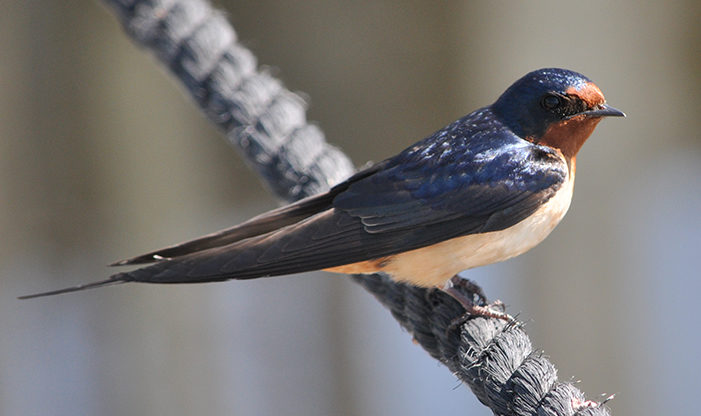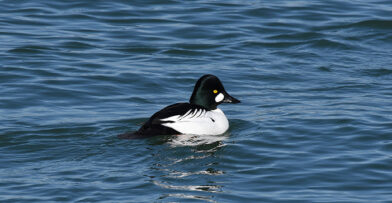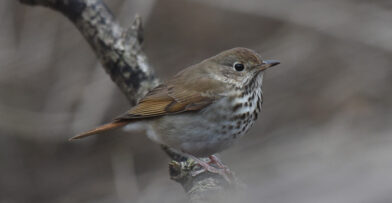Our Bird Profile series highlights a species that is migrating through, breeding, or is a year-round resident of Wisconsin that can be found at Schlitz Audubon or in your backyard.
Name
Barn Swallow, Hirundo rustica
Basic Appearance & Description
The Barn Swallow is the most widespread swallow species in the world. They are small to medium songbirds with long, pointed wings. Like other swallows, their tail is long, but the deep fork in the tail of the Barn Swallow distinguishes it from other swallows in North America.
Barn Swallows have a blue-black back, a rusty reddish throat, and a light white-brown underside. The coloration of male and female is more similar than that of other songbirds. Their flight is elegant, smooth, and sweeping.
They are long-distance migrants, wintering in the Southern Hemisphere and breeding throughout the Northern Hemisphere, including Wisconsin. Barn Swallows arrive here between mid-April and mid-May and leave by early October. During migration, they travel in large groups.
Song
Both male and female Barn Swallows sing during courtship and egg-laying. Their song is made of continuous chirping.
Diet & Foraging
Barn Swallows are aerial insectivores, meaning that they hunt and eat insects while they are flying, often displaying stunning flight patterns in the process. Mosquitoes and gnats are some of the insects they eat, so they are natural pest control.
Habitat & Nesting
You will see them in meadows, fields, and over water. Barn Swallows once nested in caves, but now mostly nest in man-made structures, such as under the eaves of barns and under bridges. Nesting occurs primarily in June and July. Both parents build their cup nests, made of mud pellets lined with grass and feathers. They may take up to 1,000 trips to collect mud for the nests. Fortunately, they often return to re-use a nest from a previous year. Typically, 3-7 eggs are laid per brood.
When & Where to Find at Schlitz Audubon
Watch for Barn Swallows flying over our prairie, swooping low over our ponds looking for prey. You will find a number of them nesting in the rafters of our Visitor Center. This provides a unique opportunity to see their nests and watch their behaviors up close!
Other Fun Facts
- The Barn Swallow has adapted to human development, with more structures providing more nesting habitat. Therefore, their current conservation status is common.
- Barn Swallows are known to eat up to 60 insects per hour!


